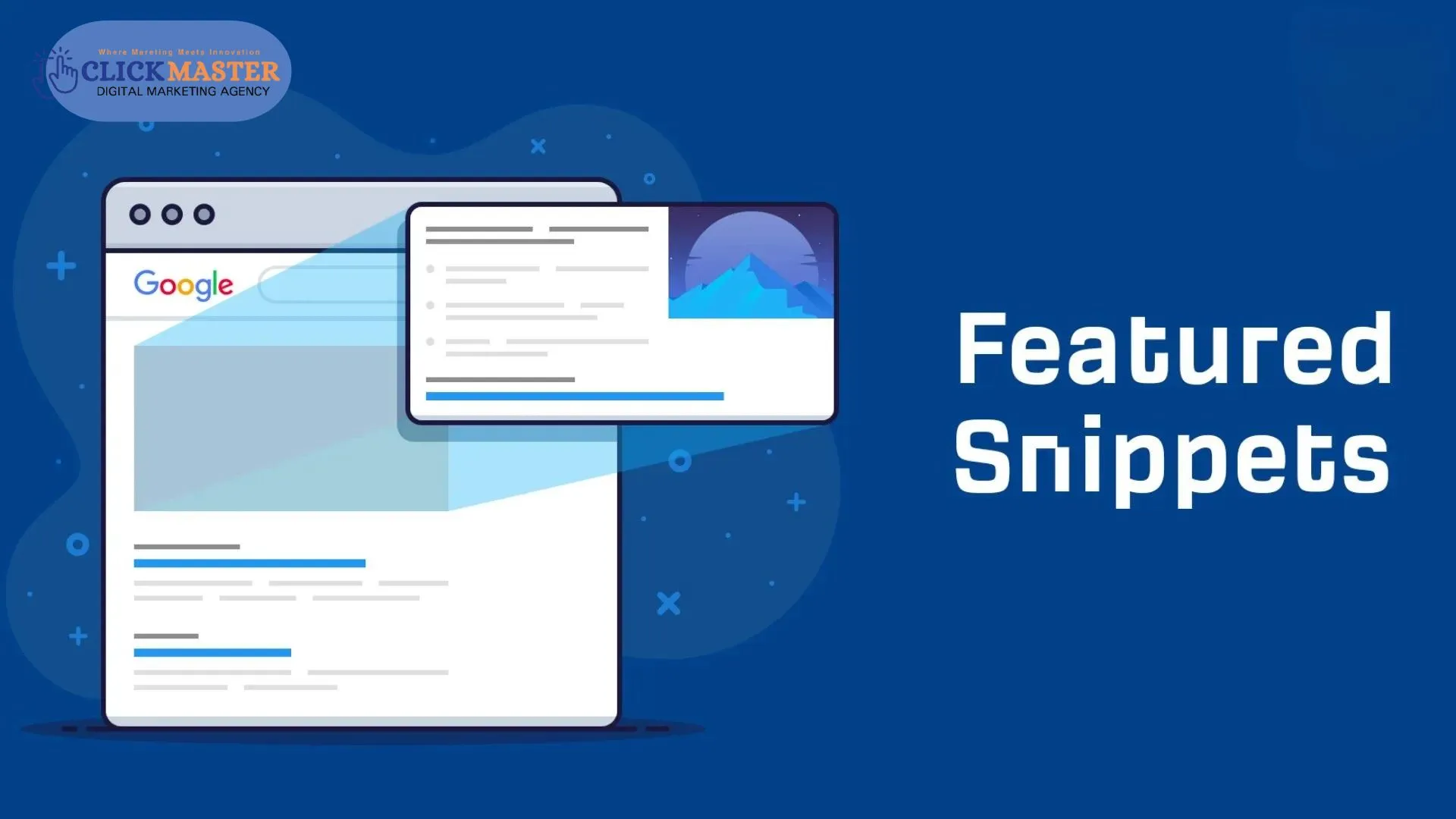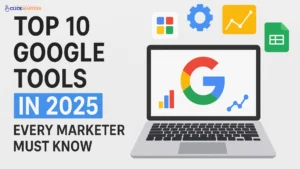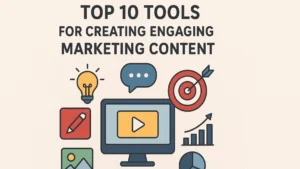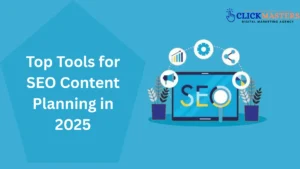In today’s digital world, Content Optimization is one of the most important aspects of SEO. While many focus on creating content, optimizing it for search engines sets successful sites apart. From keyword research to targeting featured snippets, mastering content optimization is critical for ranking higher in search engines. Featured snippets, particularly, offer a prominent position in search results and can significantly boost your organic traffic. This guide explores everything you need to know about optimizing content, including how to rank for featured snippets, using the featured snippet tool, and developing a content optimization system. Whether you’re new to SEO or looking to refine your content marketing strategy, this guide will provide you with the knowledge to take your SEO to the next level.
What is Content Optimization?
Content optimization is the process of improving the quality, relevance, and visibility of content to enhance user experience and search engine rankings. It involves strategies like keyword research, refining content structure, improving readability, and adding multimedia elements. The goal is to make content more engaging, valuable, and easily discoverable. It also focuses on technical aspects such as meta tags, page speed, and mobile responsiveness. Ultimately, content optimization ensures that the content aligns with both user needs and search engine algorithms, driving more traffic and conversions.
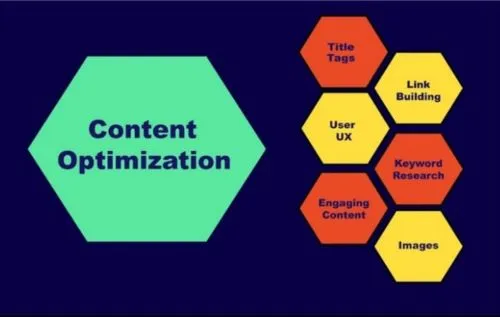
Why Content Optimization is Crucial for SEO
Effective content optimization plays a significant role in your SEO strategy. Here’s why it’s so important:
- Improved Search Rankings: Optimized content is more likely to rank higher in search results. When your content aligns with search engine algorithms, it becomes more discoverable.
- Enhanced User Experience: Optimized content is easy to read and navigate. It loads faster, is mobile-friendly, and answers users’ questions directly.
- Increased Engagement: When your content is highly relevant and well-structured, it increases the likelihood of user engagement, including time on site, social shares, and repeat visits.
- Higher Click-Through Rates (CTR): Featured snippets often have higher CTRs because they take prime real estate at the top of search results.
Optimizing your content means aligning it with what users are searching for and ensuring it meets their needs, while also helping search engines recognize it as valuable.
What are Featured Snippets
Featured snippets are concise, direct answers to user queries that appear at the top of some Google search results, often in a box. These snippets are extracted from web pages that Google considers to provide the best answer to a specific question. They typically display in formats like paragraphs, lists, or tables, providing users with quick, relevant information without needing to click on a link. Featured snippets aim to enhance the user experience by offering immediate answers and can increase visibility and traffic to the source website.
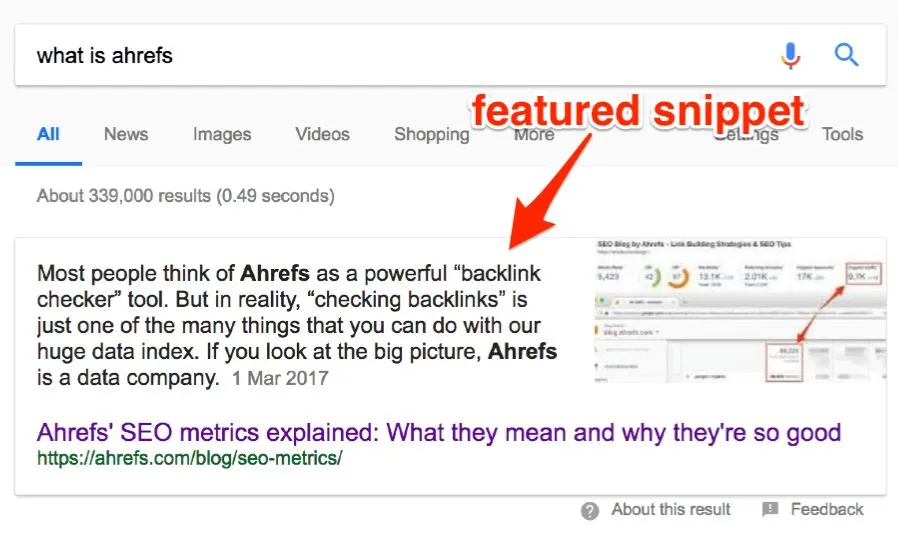
Why Are They Important
Increased Visibility: Featured snippets appear at the top of search results, giving your content prime visibility and improving its chances of being seen by a larger audience.
Higher Click-Through Rates (CTR): Being featured in a snippet often leads to higher CTR, as users tend to click on the top result for quick answers.
Enhanced User Experience: Snippets provide direct answers to users’ queries, improving the user experience by delivering quick and relevant information without the need to click through multiple pages.
Boosted SEO Performance: Featured snippets can improve your SEO rankings by making your website more likely to appear in the top positions for targeted queries.
How to Optimize Content for Featured Snippets
To optimize content for featured snippets, follow these strategies:
- Target Question-Based Queries: Focus on common questions in your niche and structure your content to answer them directly, using clear and concise language.
- Use Structured Data: Organize your content with headings, subheadings, bullet points, and numbered lists to make it easy for Google to extract and display as a snippet.
- Provide Clear and Concise Answers: Aim for brief, well-written answers (40-60 words) that directly address the user’s query, ideally placed near the top of the page.
- Leverage Existing Content: Review your top-ranking pages to see if they can be optimized to qualify for featured snippets by adjusting the content structure and making the answers more prominent.
- Optimize for Long-Tail Keywords: Focus on long-tail keywords that are more likely to trigger featured snippets, as these tend to be more specific and question-based.
Best Practices for Content Optimization
Here are some best practices for content optimization:
- Keyword Research: Use relevant keywords and phrases naturally throughout your content. Focus on long-tail keywords and variations to target specific queries.
- Content Structure: Break your content into clear sections with headings, subheadings, and bullet points to improve readability and make it easier for search engines to understand.
- Improve Readability: Write in a clear, engaging, and simple style. Use short paragraphs, varied sentence structures, and active voice to make content more digestible for readers.
- Optimize for Mobile: Ensure your content is mobile-friendly, with fast load times and responsive design, as more users access content from mobile devices.
- Incorporate Visuals: Use high-quality images, videos, infographics, and other multimedia elements to make content more engaging and shareable.
- Include Internal and External Links: Link to related content within your site and credible external sources to improve authority, user experience, and SEO performance.
- Update Regularly: Refresh old content with new information and optimize it to maintain relevance, improve rankings, and stay competitive.
- Focus on User Intent: Align your content with the user’s search intent, whether informational, transactional, or navigational, to provide the most relevant value.

How Our Agency Boosts Your Website Traffic
SEO That Brings Long-Term Success
Transform Your Traffic into Loyal Customers
SEO Strategies for Sustainable Growth
Strategies of Content Optimization in Content Marketing
Here are the key aspects of content optimization in content marketing:
- Keyword Optimization: Incorporate relevant keywords naturally throughout the content to ensure it ranks well on search engines and attracts the right audience.
- User Intent: Align content with the searcher’s intent, whether informational, transactional, or navigational, to ensure the content meets the needs of the audience.
- Image SEO: Optimize images by using descriptive file names, alt text, and proper file sizes to improve visibility in search engines and enhance page load speed.
- Content Structure: Organize content with clear headings, subheadings, bullet points, and short paragraphs to enhance readability and improve search engine indexing.
- Local Optimization: For businesses targeting a local audience, optimize content for local search terms, add location-specific information, and create a Google My Business profile for better local search visibility.
- Internal and External Linking: Use internal links to guide users to related content within your site and external links to authoritative sources, improving SEO and user engagement.
- Meta Tags: Ensure title tags, meta descriptions, and header tags are optimized with relevant keywords to improve click-through rates and search engine visibility.
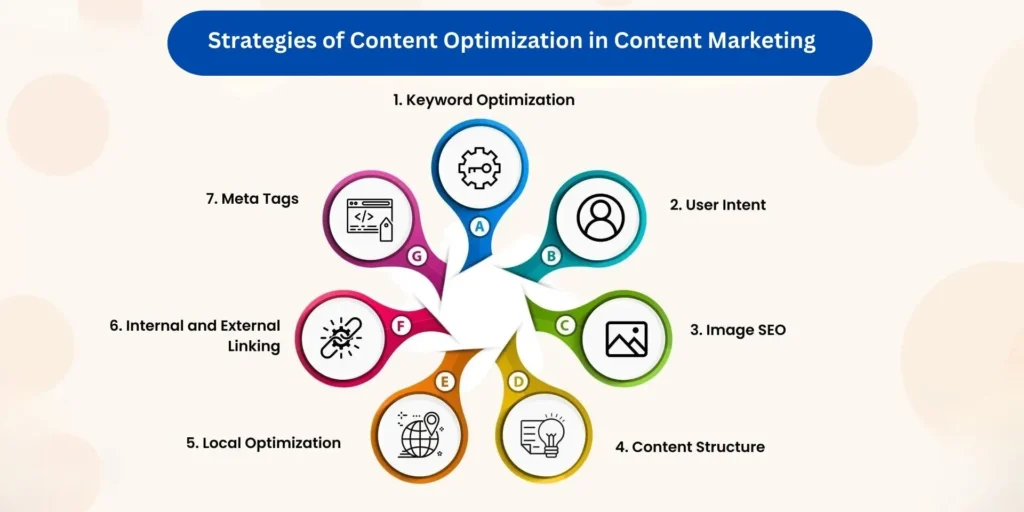
Featured Snippet Tools and Resources
Here are some tools and resources that can help you optimize content for featured snippets:
- Answer The Public: This tool generates a visual map of commonly asked questions around a specific keyword, helping you identify potential featured snippet opportunities based on user queries.
- Ahrefs: Ahrefs provides a “Position Explorer” feature that lets you track keywords that have a chance to appear in featured snippets, helping you optimize your content accordingly.
- SEMrush: SEMrush offers a “Position Tracking” tool, which helps you monitor whether your content is ranking for featured snippets and provides suggestions on improving rankings.
- Moz Keyword Explorer: Moz helps you identify question-based keywords and long-tail queries with high snippet potential, making it easier to target content for featured snippets.
- Surfer SEO: Surfer SEO analyzes the top-ranking pages for your target keywords and gives optimization tips, including strategies to improve your chances of earning a featured snippet.
- Google Search Console: Google Search Console can help you identify keywords that already trigger featured snippets and allow you to fine-tune your content for higher chances of appearing.
Conclusion
Content optimization is a powerful tool for improving SEO performance and driving more organic traffic. By understanding featured snippets and following best practices for optimization, you can significantly enhance your chances of ranking higher and reaching a wider audience. Use the right tools, target the right keywords, and optimize your content structure to increase visibility and engagement. Start applying these strategies today, and watch as your content climbs to the top of the search results, appearing prominently in featured snippets and boosting your traffic and conversions.
FAQs
What is a featured snippet?
A featured snippet is a summarized answer displayed at the top of Google search results. It provides quick, concise information in response to a query. It often includes text, lists, or tables from a relevant webpage, giving users direct answers without needing to click on the result.
How can I rank for a featured snippet?
To rank for a featured snippet, create clear, concise content that answers common questions directly. Use structured formats like lists, tables, or short paragraphs. Optimize your content with relevant keywords and ensure it aligns with search intent.
Does content optimization help improve my website’s user experience?
Yes, content optimization improves user experience by making information more accessible and easier to understand. It enhances page load speed, mobile responsiveness, and navigation. Well-optimized content also keeps users engaged, reducing bounce rates and improving satisfaction.
Can I use content optimization tools to improve my rankings?
Yes, content optimization tools can help improve rankings by analyzing keywords, readability, and SEO elements. They offer suggestions for enhancing on-page content and ensuring it aligns with search engine algorithms. Using these tools can increase visibility and boost organic traffic.

